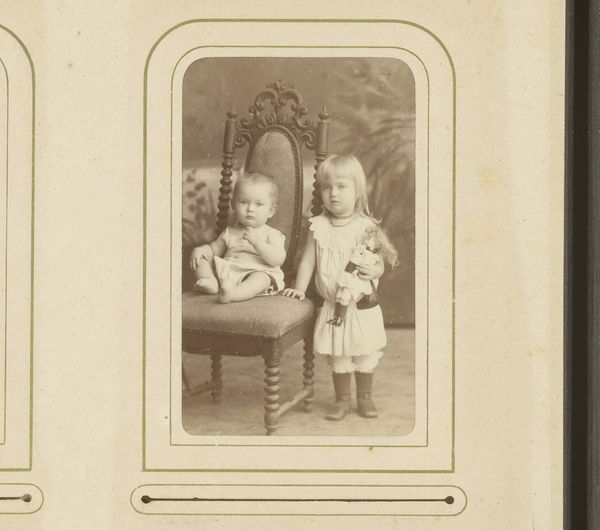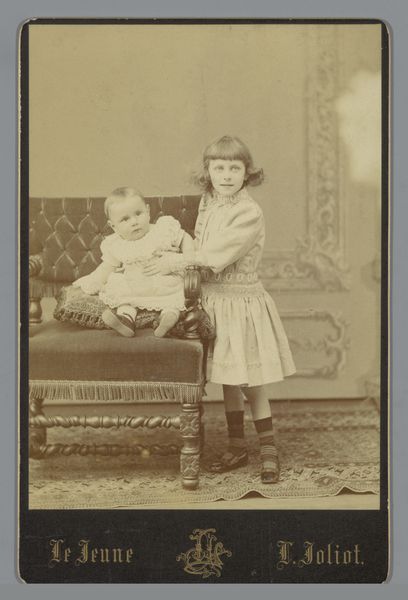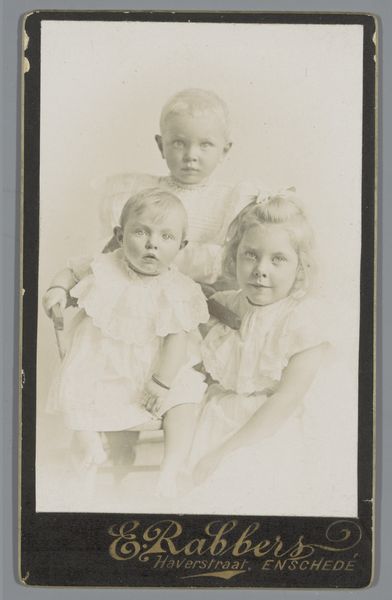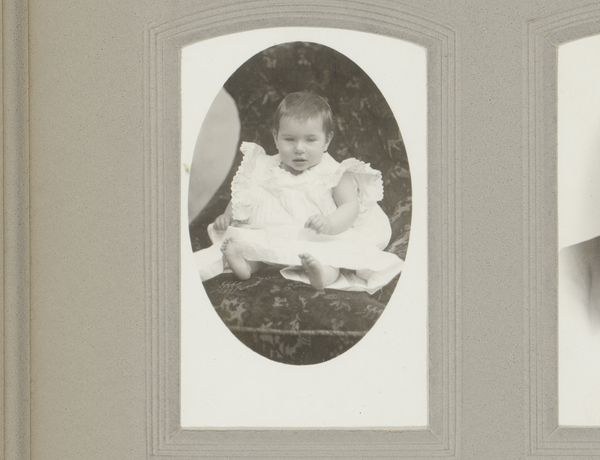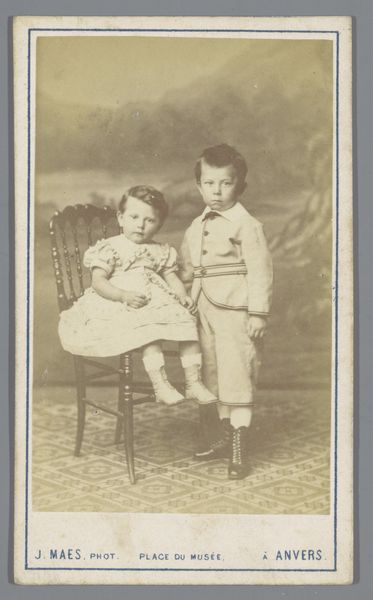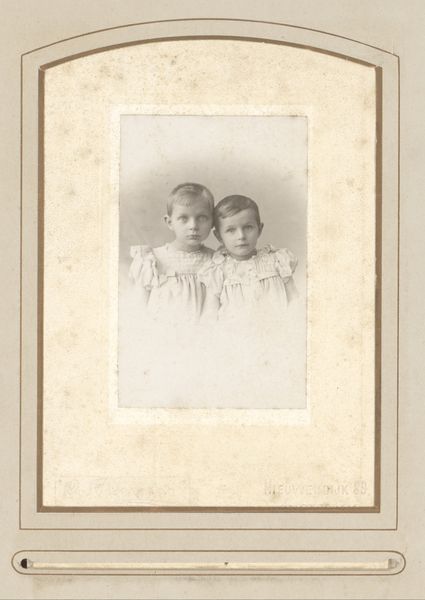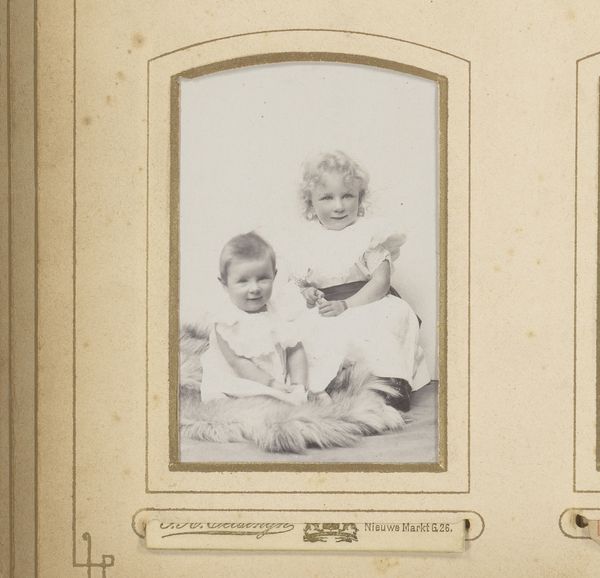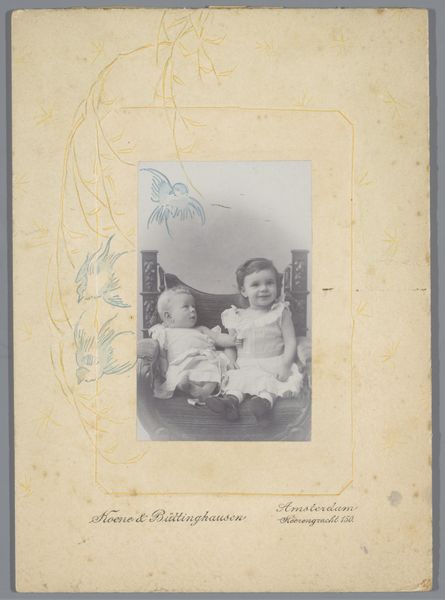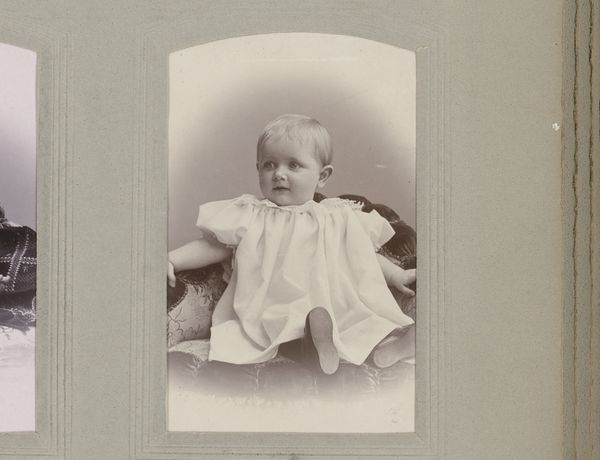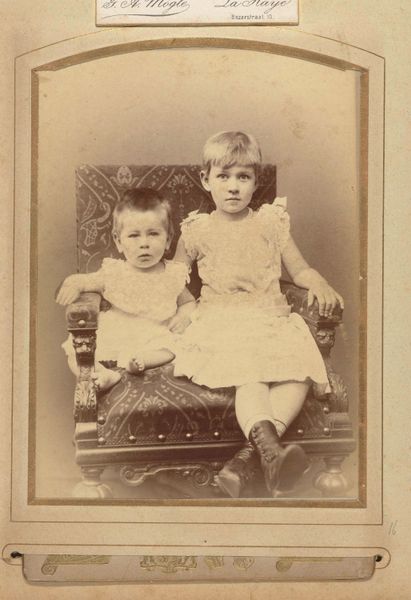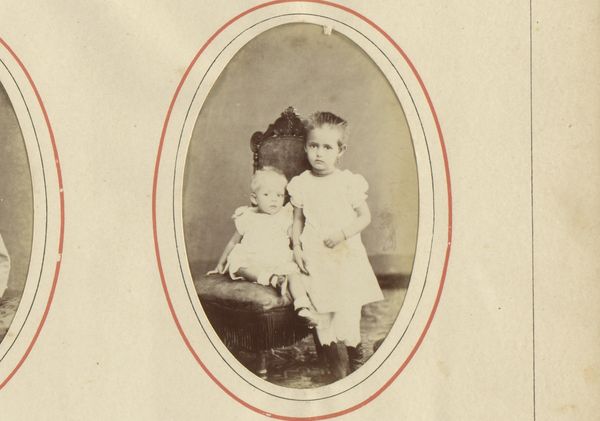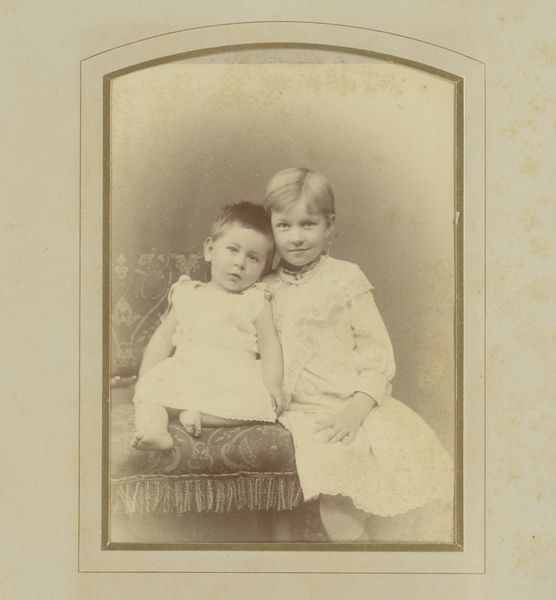
photography, gelatin-silver-print
#
portrait
#
still-life-photography
#
pictorialism
#
photography
#
gelatin-silver-print
Dimensions: height 170 mm, width 110 mm
Copyright: Rijks Museum: Open Domain
Curator: We're looking at a gelatin silver print from sometime between 1904 and 1911, entitled "Portret van Lieke en Ada Koopman"—a portrait of two young girls. Editor: My first thought is how precious and vulnerable they appear. There's a stillness and a soft, dreamlike quality to the image, like a memory half-forgotten. Curator: That softness speaks to the pictorialist style popular at the time. It’s important to remember how photography was finding its place among the established art forms. Pictorialism really blurred the lines between photography and painting through darkroom manipulation and printing techniques. Editor: Right. Pictorialism often romanticized its subjects, but looking at these girls, I’m struck by the staging of childhood during this era, which seems designed to uphold societal norms. The innocence, the simplicity of their dresses—it all plays into a very specific image of ideal femininity. Curator: That’s a fascinating perspective. Contextually, the studio portrait like this was a fairly significant statement for a family. The expense would have meant it was an event, marking time, class, and status. It makes you wonder about the stories not captured; what are their lived experiences beyond this carefully constructed image? Editor: Exactly. The photograph becomes this almost loaded signifier of aspiration. Who gets to be seen and remembered in this way, and what message does that send? It serves as a reminder of the subtle, but very real, socio-economic filters that impact our historical narratives. Curator: I agree, examining portraiture from this vantage helps us challenge the assumed truths about the past, revealing how even seemingly innocent depictions reinforce larger power dynamics. Editor: Reflecting on this piece now, I'm compelled to consider the relationship of image-making to power, identity and representation. Curator: Indeed, and to examine how these visual strategies continue to shape our perceptions even today.
Comments
No comments
Be the first to comment and join the conversation on the ultimate creative platform.
